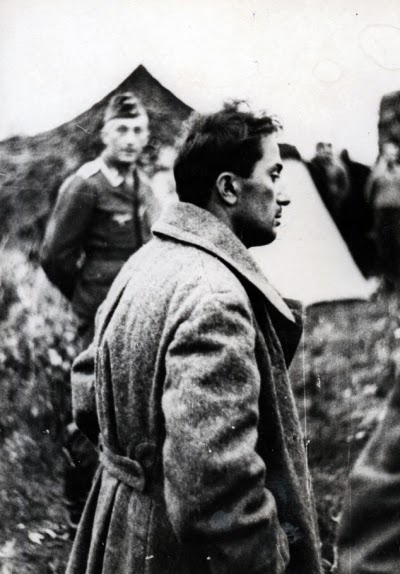Dirlewanger: A child Molester, Violent Alcoholic, Sadist & War Criminal – Was Kicked to Death by His Guards
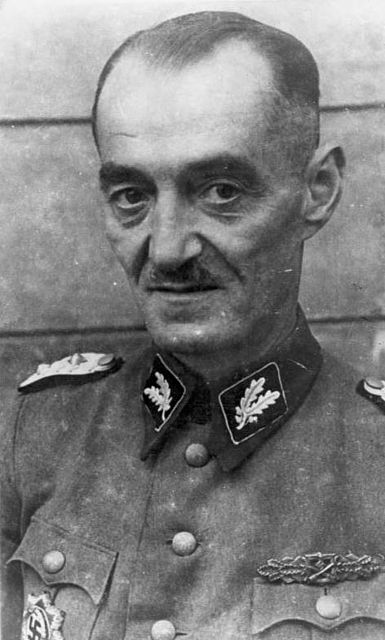
Dr. Oskar Paul Dirlewanger (26 September 1895 – 7 June 1945 (certificate of death), a German military officer, was the founder and commander of the infamous Nazi SS penal unit “Dirlewanger” during World War II. Dirlewanger’s name is closely linked to some of the worst crimes of the war. He also fought in World War I as well as in the post-World War I conflicts, and in the Spanish Civil War. He died after World War II while in Allied custody, apparently beaten to death by his guards.
He is invariably described as an extremely cruel character by historians and researchers, including as “a psychopathic killer and child molester” by Steven Zaloga, as “violently sadistic” by Richard Rhodes, as “an expert in extermination and a devotee of sadism and necrophilia” by J. Bowyer Bell, and as “a sadist and necrophiliac” by Bryan Mark Rigg. World War II historian Chris Bishop called him the “most evil man in the SS.” According to Timothy Snyder, “in all the theaters of the Second World War, few could compete in cruelty with Oskar Dirlewanger.
Oskar Dirlewanger was born in 1895 in Würzburg. He enlisted in the Imperial German Army in 1913 and served as a machine gunner in the 123rd Grenadier Regiment on the Western Front of World War I, where he took part in the German invasion of Belgium and later fought in France. He won the Iron Cross 2nd Class and 1st Class medals, having been wounded six times, and finished the war with the rank of Lieutenant in charge of the machine gun company of the Infantry Regiment 121 on the Eastern Front in southern Russia and Romania. At the ceasing of hostilities the German units in Dirlewanger’s area were ordered to be interned in Romania, but Dirlewanger disobeyed orders and led 600 men from his and other units back to Germany.
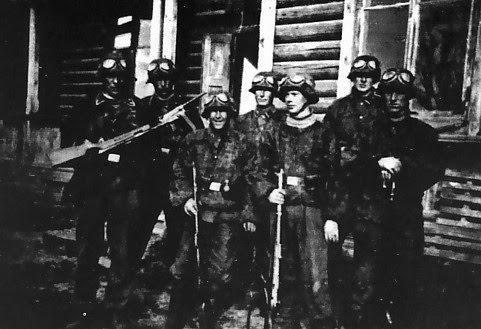
According to his German biographer Knut Stang, the war was the main factor that determined Dirlewanger’s later life and his “terror warfare” methods, as “his amoral personality, with his alcoholism and his sadistic sexual orientation, was additionally shattered by the front experiences of the First World War and its frenzied violence and barbarism.”
Interwar period
After the end of World War I, Dirlewanger, described in a police report as “a mentally unstable, violent fanatic and alcoholic, who had the habit of erupting into violence under the influence of drugs,” joined different Freikorps right-wing paramilitary militias and fought against German communists in Ruhr and Saxony, and against Polish nationalists in Upper Silesia.
He participated in the suppression of German Revolution of 1918–19 with the Freikorps in the cities of Backnang, Kornwestheim, Esslingen, Untertürkheim, Aalen, Schorndorf and Heidenheim near Stuttgart, in the Ruhr at Dortmund and Essen in 1920, and in eastern Germany in 1920 and 1921. During this period Dirlewanger served in Freikorps Epp, Freikorps Haas, Freikorps Sprösser, and Freikorps Holz. Later, he commanded an armed formation of students which was set up by him under the Württemberg “Highway Watch”. On Easter Sunday 1921, Dirlewanger commanded an armoured train that moved towards Sangerhausen, which had been occupied by the Communist Party of Germany militia group of Max Hoelz in one of their raids that hoped to inspire worker uprisings. An attack by Dirlewanger failed, and the enemy militiamen succeeded in cutting off his force. After the latter was reinforced by pro-government troops during the night, the Communists withdrew from the town.
During this operation, Dirlewanger was grazed on the head by a gunshot. After the Nazi Party (NSDAP) gained power, Dirlewanger was celebrated as the town’s “liberator from the Red terrorists” and received its honorary citizenship in 1935. Dirlewanger was nicknamed “Gandhi” because of his slender build.
Between his militant forays, he studied at the Goethe University Frankfurt and in 1922 obtained a Doctorate in political science. The following year, he joined the NSDAP and its SA militia, and later also the SS. From 1928-1931 he was an executive director of a textile factory owned by a Jewish family in Erfurt where he renounced active service in the Sturmabteilung but financially donated to the SA, possibly obtaining the money by embezzling from his company.
Dirlewanger held various jobs, which included working at a bank and a knit-wear factory. He was also repeatedly convicted for illegal arms possession and embezzlement. In 1934, he was convicted and sentenced to two years imprisonment for the statutory rape of a 14-year-old girl from the League of German Girls (BDM), as well as the illegal use of a government vehicle and damaging said vehicle while under the influence of alcohol. Dirlewanger also lost his job, his doctor title and all military honours, and was expelled from the NSDAP. Soon after his release from the prison in Ludwigsburg, Dirlewanger was arrested again on similar charges for criminal recidivism.
He was sent to the Welzheim concentration camp, either as what Stein feels was standard practice for deviant sexual offenders in Germany at the time or for creating a disturbance demanding the reversal of his criminal charges appearing before the Reich Chancellery.Dirlewanger was released and reinstated in the general reserve of the SS following personal intervention of his wartime companion and local NSDAP cadre comrade Gottlob Berger, who was also long-time personal friend of the SS chief Heinrich Himmler and had become the head of the SS Head Office (SS-Hauptamt, SS-HA).
Dirlewanger next went to Spain where he enlisted in the Spanish Foreign Legion during the Spanish Civil War. Through Berger he transferred to the German Condor Legion where he served from 1936 to 1939 and was wounded three times. Following further intervention on his behalf by his patron Berger, he successfully petitioned to have his case reconsidered in light of his service in Spain. Dirlewanger was reinstated into the NSDAP, albeit with a higher party number (#1,098,716). His doctorate was also restored by the University of Frankfurt.
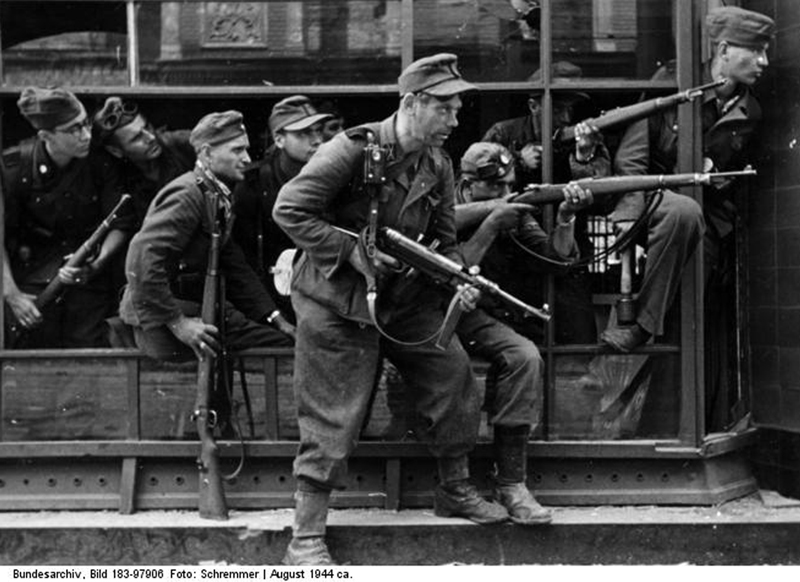
World War II
At the beginning of World War II, Dirlewanger volunteered for the Waffen-SS and received the rank of Obersturmführer. He eventually became the commander of the so-called Sonderkommando Dirlewanger (at first designated as a battalion, later expanded to a regiment and a brigade, and eventually a division), composed originally of a small group of former poachers along with soldiers of a more conventional background. It was believed that the excellent tracking and shooting skills of the poachers could be put to constructive use in the fight against partisans. Later, Dirlewanger’s soldiers were mostly recruited among the ever-increasing groups of German convicted criminals (civilian and military) and concentration camp inmates, eventually including even mental asylum patients, interned gypsies, and (at the end of the war) political prisoners sentenced for their anti-Nazi beliefs and activities.
The unit was assigned to security duties first in German-occupied Poland (General Government), where Dirlewanger served as an SS-TV commandant of a labour camp at Stary Dzików. The camp was a subject of an abuse investigation by the SS judge Georg Konrad Morgen, who accused Dirlewanger of wanton acts of murder, corruption and Rassenschande or race defilement (Morgen consequently himself got reduced in rank and sent to the Eastern Front).
According to Morgen, “Dirlewanger was a nuisance and a terror to the entire population. He repeatedly pillaged the ghetto in Lublin, extorting ransoms.” Atrocities committed by Dirlewanger included injecting strychnine into young Jewish female prisoners, previously undressed and whipped, to watch them convulse to death in front of him and his friends for entertainment.

According to Raul Hilberg, this camp was where “one of the first instances that reference was made to the ‘soap-making rumor’;” according to the rumour, Dirlewanger “cut up Jewish women and boiled them with horse meat to make soap.” Dirlewanger’s primary patron in the SS hierarchy was still Gottlob Berger, who provided Himmler with a massive political boost by numerically increasing the Waffen-SS through his position as chief of the SS-Hauptamt. In Forgotten Holocaust: The Poles Under German Occupation, Richard C. Lukas described Dirlewanger as “a sadist whose brutality was well known … one of those degenerates who, in saner days, would have been court-martialed out of the German army.” According to Peter Longerich, Dirlewanger’s leadership “was characterized by continued alcohol abuse, looting, sadistic atrocities, rape, and murder—and his mentor Berger tolerated this behaviour, as did Himmler, who so urgently needed men such as the Sonderkommando Dirlewanger in his fight against ‘subhumanity’.” In his letter to Himmler, SS-Brigadeführer Odilo Globocnik recommended Dirlewanger, who “in charge of the Jewish camp of Dzikow … was an excellent leader.” During the Nuremberg Trials after the war, Berger said: “Now Dr. Dirlewanger was hardly a good boy. You can’t say that. But he was a good soldier, and he had one big mistake that he didn’t know when to stop drinking.”
In January 1942, however, the local Higher SS and Police Leader, SS-Obergruppenführer Friedrich-Wilhelm Krüger threatened: “[Unless] this bunch of criminals disappears from the General Government within a week, I will go myself and lock them up.” In February, the unruly unit was promptly reassigned for anti-partisan duties in German-occupied Belarus, “with a speciality of ‘pacifying’ an area by slaughtering every man, woman and child.”
In Bloodlands: Europe Between Hitler and Stalin, Timothy Snyder wrote that “Dirlewanger’s preferred method was to herd the local population inside a barn, set the barn on fire, and then shoot with machine guns anyone who tried to escape.” Rounded-up civilians were repeatedly used as human shields and marched over minefields. In Masters of Death, Richard Rhodes wrote that Dirlewanger and his force “raped and tortured young women and slaughtered Jews Einsatzgruppen-style in Byelorussia beginning in 1942.” Snyder cautiously estimated that the Sonderkommando, by then regiment-sized, killed at least 30,000 Belarusian civilians. Some other estimates are much higher, such as 120,000 people killed in 200 villages.Himmler was well aware of Dirlewanger’s reputation and record, but nonetheless awarded him the German Cross in Gold on 5 December 1943, in recognition of his unit’s actions such as during Operation Cottbus (May—June 1943), during which Dirlewanger reported exterminating more than 14,000 “bandits”.
Soldiers tentatively identified as members of the SS-Sturmbrigade “Dirlewanger” in central Warsaw in 1944
In mid-1944, during the German rout from Belarus, Dirlewanger’s unit suffered heavy losses in rear-guard fights against Soviet regulars. It was then hastily rebuilt and reformed into a “storm brigade” and used in the suppression of the Warsaw Uprising. Historian Martin Windrow wrote that in summer of 1944 Dirlewanger led his “butchers, rapists and looters into action against the Warsaw Uprising, and quickly committed … unspeakable crimes.”
In Warsaw, Dirlewanger participated in the Wola massacre, together with police units rounding up and shooting some 40,000 civilians, most of them in just two days. In the same Wola district, Dirlewanger burned three hospitals with patients inside, while the nurses were “whipped, gang-raped and finally hanged naked, together with the doctors” to the accompaniment of music. Later, “they drank, raped and murdered their way through the Old Town, slaughtering civilians and fighters alike without distinction of age or sex.” In the Old Town – where about 30,000 civilians were killed – several thousand wounded in field hospitals overrun by the Germans were shot and set on fire with flamethrowers.
Reportedly, “the Dirlewanger brigade burned prisoners alive with gasoline, impaled babies on bayonets and stuck them out of windows and hung women upside down from balconies.” SS-Obergruppenführer Erich von dem Bach-Zelewski, overall commander of the forces pacifying Warsaw – and Dirlewanger’s former boss in Belarus – described Dirlewanger as having “a typical mercenary nature”; von dem Bach’s staff officer sent to summon Dirlewanger before him was driven off at gunpoint. The unit won a dubious distinction of having suffered extremely severe casualties in Warsaw, losing a total 315% of its personnel (including reinforcements and replacements) in just two months of fighting. Nevertheless, in recognition of his work to crush the uprising and intimidate the population of the city, Dirlewanger received his final promotion, to the rank of SS-Oberführer, on 15 August 1944.
In October, he was awarded the Knight’s Cross of the Iron Cross, recommended for it by his superior officer in Warsaw, SS-Gruppenführer Heinz Reinefarth (after the war, Reinefarth lied about his role in Warsaw, even denying Dirlewanger had been under his command).
Dirlewanger then led his men in joining the efforts to put down the Slovak National Uprising in October 1944, eventually being posted on front lines of Hungary and eastern Germany to fight against the advancing Red Army. In February 1945, the unit was expanded again and re-designated as an SS Grenadier division. That same month, Oskar Dirlewanger was shot in the chest while fighting against the invading Soviet forces near Guben in Brandenburg and sent to the rear. It was his twelfth and final injury in the war. On April 22, he went into hiding.
Death
Dirlewanger was arrested on 1 June 1945 near the town of Altshausen in Upper Swabia by the French occupation zone authorities while wearing civilian clothes and hiding under a false name in a remote hunting lodge – reportedly recognised by a former Jewish concentration camp inmate – and brought to a detention centre. He died around 5–7 June 1945 in a prison camp at Altshausen, probably as a result of ill-treatment.
The exact cause of Dirlewanger’s death is unknown, which over time led to speculation. His death certificate issued by French authorities stated that Dirlewanger died on 7 June 1945 of natural causes. However, the certificate has been questioned, especially by German historians. According to Rolf Michaelis, a Luftwaffe lieutenant named Anton Füssinger claimed he was Dirlewanger’s cell mate, and said that he witnessed Dirlewanger being gravely beaten by Polish guards in French service on the night of 4 to 5 June, resulting in his death. However, no one else corroborated any of his statements, despite further research by the Polish Institute of National Remembrance. Contemporary Polish sources suggest that those guards could have been recruited from among former forced labourers, although a Polish survivor of the original Nazi camp at Altshausen stated that its former Polish prisoners did not know anything about Dirlewanger’s death.
The lack of corroborating evidence led to even more rumours after the war ended. Many sightings of Dirlewanger were made around the world over the years. Although the French recorded that Dirlewanger was buried on 19 June 1945, there were rumours and tabloid stories suggesting that he had escaped and lived on, including one popular story of Dirlewanger serving with the French Foreign Legion in Vietnam during the First Indochina War and later defecting to Egypt to join Gamal Abdel Nasser’s army (in another variation, to Syria). He was even being still officially wanted by the Polish government for murdering over 30,000 people in Poland. In response, the department of public prosecution in Ravensburg arranged the exhumation of Dirlewanger’s corpse to confirm his identity in November 1960. The place of his burial was confirmed, although it was liquidated later.

Dr. Oskar Paul Dirlewanger (26 September 1895 – 7 June 1945 (certificate of death), a German military officer, was the founder and commander of the infamous Nazi SS penal unit “Dirlewanger” during World War II. Dirlewanger’s name is closely linked to some of the worst crimes of the war. He also fought in World War I as well as in the post-World War I conflicts, and in the Spanish Civil War. He died after World War II while in Allied custody, apparently beaten to death by his guards.
He is invariably described as an extremely cruel character by historians and researchers, including as “a psychopathic killer and child molester” by Steven Zaloga, as “violently sadistic” by Richard Rhodes, as “an expert in extermination and a devotee of sadism and necrophilia” by J. Bowyer Bell, and as “a sadist and necrophiliac” by Bryan Mark Rigg. World War II historian Chris Bishop called him the “most evil man in the SS.” According to Timothy Snyder, “in all the theaters of the Second World War, few could compete in cruelty with Oskar Dirlewanger.
Oskar Dirlewanger was born in 1895 in Würzburg. He enlisted in the Imperial German Army in 1913 and served as a machine gunner in the 123rd Grenadier Regiment on the Western Front of World War I, where he took part in the German invasion of Belgium and later fought in France. He won the Iron Cross 2nd Class and 1st Class medals, having been wounded six times, and finished the war with the rank of Lieutenant in charge of the machine gun company of the Infantry Regiment 121 on the Eastern Front in southern Russia and Romania. At the ceasing of hostilities the German units in Dirlewanger’s area were ordered to be interned in Romania, but Dirlewanger disobeyed orders and led 600 men from his and other units back to Germany.

According to his German biographer Knut Stang, the war was the main factor that determined Dirlewanger’s later life and his “terror warfare” methods, as “his amoral personality, with his alcoholism and his sadistic sexual orientation, was additionally shattered by the front experiences of the First World War and its frenzied violence and barbarism.”
Interwar period
After the end of World War I, Dirlewanger, described in a police report as “a mentally unstable, violent fanatic and alcoholic, who had the habit of erupting into violence under the influence of drugs,” joined different Freikorps right-wing paramilitary militias and fought against German communists in Ruhr and Saxony, and against Polish nationalists in Upper Silesia.
He participated in the suppression of German Revolution of 1918–19 with the Freikorps in the cities of Backnang, Kornwestheim, Esslingen, Untertürkheim, Aalen, Schorndorf and Heidenheim near Stuttgart, in the Ruhr at Dortmund and Essen in 1920, and in eastern Germany in 1920 and 1921. During this period Dirlewanger served in Freikorps Epp, Freikorps Haas, Freikorps Sprösser, and Freikorps Holz. Later, he commanded an armed formation of students which was set up by him under the Württemberg “Highway Watch”. On Easter Sunday 1921, Dirlewanger commanded an armoured train that moved towards Sangerhausen, which had been occupied by the Communist Party of Germany militia group of Max Hoelz in one of their raids that hoped to inspire worker uprisings. An attack by Dirlewanger failed, and the enemy militiamen succeeded in cutting off his force. After the latter was reinforced by pro-government troops during the night, the Communists withdrew from the town.
During this operation, Dirlewanger was grazed on the head by a gunshot. After the Nazi Party (NSDAP) gained power, Dirlewanger was celebrated as the town’s “liberator from the Red terrorists” and received its honorary citizenship in 1935. Dirlewanger was nicknamed “Gandhi” because of his slender build.
Between his militant forays, he studied at the Goethe University Frankfurt and in 1922 obtained a Doctorate in political science. The following year, he joined the NSDAP and its SA militia, and later also the SS. From 1928-1931 he was an executive director of a textile factory owned by a Jewish family in Erfurt where he renounced active service in the Sturmabteilung but financially donated to the SA, possibly obtaining the money by embezzling from his company.
Dirlewanger held various jobs, which included working at a bank and a knit-wear factory. He was also repeatedly convicted for illegal arms possession and embezzlement. In 1934, he was convicted and sentenced to two years imprisonment for the statutory rape of a 14-year-old girl from the League of German Girls (BDM), as well as the illegal use of a government vehicle and damaging said vehicle while under the influence of alcohol. Dirlewanger also lost his job, his doctor title and all military honours, and was expelled from the NSDAP. Soon after his release from the prison in Ludwigsburg, Dirlewanger was arrested again on similar charges for criminal recidivism.
He was sent to the Welzheim concentration camp, either as what Stein feels was standard practice for deviant sexual offenders in Germany at the time or for creating a disturbance demanding the reversal of his criminal charges appearing before the Reich Chancellery.Dirlewanger was released and reinstated in the general reserve of the SS following personal intervention of his wartime companion and local NSDAP cadre comrade Gottlob Berger, who was also long-time personal friend of the SS chief Heinrich Himmler and had become the head of the SS Head Office (SS-Hauptamt, SS-HA).
Dirlewanger next went to Spain where he enlisted in the Spanish Foreign Legion during the Spanish Civil War. Through Berger he transferred to the German Condor Legion where he served from 1936 to 1939 and was wounded three times. Following further intervention on his behalf by his patron Berger, he successfully petitioned to have his case reconsidered in light of his service in Spain. Dirlewanger was reinstated into the NSDAP, albeit with a higher party number (#1,098,716). His doctorate was also restored by the University of Frankfurt.

World War II
At the beginning of World War II, Dirlewanger volunteered for the Waffen-SS and received the rank of Obersturmführer. He eventually became the commander of the so-called Sonderkommando Dirlewanger (at first designated as a battalion, later expanded to a regiment and a brigade, and eventually a division), composed originally of a small group of former poachers along with soldiers of a more conventional background. It was believed that the excellent tracking and shooting skills of the poachers could be put to constructive use in the fight against partisans. Later, Dirlewanger’s soldiers were mostly recruited among the ever-increasing groups of German convicted criminals (civilian and military) and concentration camp inmates, eventually including even mental asylum patients, interned gypsies, and (at the end of the war) political prisoners sentenced for their anti-Nazi beliefs and activities.
The unit was assigned to security duties first in German-occupied Poland (General Government), where Dirlewanger served as an SS-TV commandant of a labour camp at Stary Dzików. The camp was a subject of an abuse investigation by the SS judge Georg Konrad Morgen, who accused Dirlewanger of wanton acts of murder, corruption and Rassenschande or race defilement (Morgen consequently himself got reduced in rank and sent to the Eastern Front).
According to Morgen, “Dirlewanger was a nuisance and a terror to the entire population. He repeatedly pillaged the ghetto in Lublin, extorting ransoms.” Atrocities committed by Dirlewanger included injecting strychnine into young Jewish female prisoners, previously undressed and whipped, to watch them convulse to death in front of him and his friends for entertainment.

According to Raul Hilberg, this camp was where “one of the first instances that reference was made to the ‘soap-making rumor’;” according to the rumour, Dirlewanger “cut up Jewish women and boiled them with horse meat to make soap.” Dirlewanger’s primary patron in the SS hierarchy was still Gottlob Berger, who provided Himmler with a massive political boost by numerically increasing the Waffen-SS through his position as chief of the SS-Hauptamt. In Forgotten Holocaust: The Poles Under German Occupation, Richard C. Lukas described Dirlewanger as “a sadist whose brutality was well known … one of those degenerates who, in saner days, would have been court-martialed out of the German army.” According to Peter Longerich, Dirlewanger’s leadership “was characterized by continued alcohol abuse, looting, sadistic atrocities, rape, and murder—and his mentor Berger tolerated this behaviour, as did Himmler, who so urgently needed men such as the Sonderkommando Dirlewanger in his fight against ‘subhumanity’.” In his letter to Himmler, SS-Brigadeführer Odilo Globocnik recommended Dirlewanger, who “in charge of the Jewish camp of Dzikow … was an excellent leader.” During the Nuremberg Trials after the war, Berger said: “Now Dr. Dirlewanger was hardly a good boy. You can’t say that. But he was a good soldier, and he had one big mistake that he didn’t know when to stop drinking.”
In January 1942, however, the local Higher SS and Police Leader, SS-Obergruppenführer Friedrich-Wilhelm Krüger threatened: “[Unless] this bunch of criminals disappears from the General Government within a week, I will go myself and lock them up.” In February, the unruly unit was promptly reassigned for anti-partisan duties in German-occupied Belarus, “with a speciality of ‘pacifying’ an area by slaughtering every man, woman and child.”

In Bloodlands: Europe Between Hitler and Stalin, Timothy Snyder wrote that “Dirlewanger’s preferred method was to herd the local population inside a barn, set the barn on fire, and then shoot with machine guns anyone who tried to escape.” Rounded-up civilians were repeatedly used as human shields and marched over minefields. In Masters of Death, Richard Rhodes wrote that Dirlewanger and his force “raped and tortured young women and slaughtered Jews Einsatzgruppen-style in Byelorussia beginning in 1942.” Snyder cautiously estimated that the Sonderkommando, by then regiment-sized, killed at least 30,000 Belarusian civilians. Some other estimates are much higher, such as 120,000 people killed in 200 villages.Himmler was well aware of Dirlewanger’s reputation and record, but nonetheless awarded him the German Cross in Gold on 5 December 1943, in recognition of his unit’s actions such as during Operation Cottbus (May—June 1943), during which Dirlewanger reported exterminating more than 14,000 “bandits”.
Soldiers tentatively identified as members of the SS-Sturmbrigade “Dirlewanger” in central Warsaw in 1944
In mid-1944, during the German rout from Belarus, Dirlewanger’s unit suffered heavy losses in rear-guard fights against Soviet regulars. It was then hastily rebuilt and reformed into a “storm brigade” and used in the suppression of the Warsaw Uprising. Historian Martin Windrow wrote that in summer of 1944 Dirlewanger led his “butchers, rapists and looters into action against the Warsaw Uprising, and quickly committed … unspeakable crimes.”
In Warsaw, Dirlewanger participated in the Wola massacre, together with police units rounding up and shooting some 40,000 civilians, most of them in just two days. In the same Wola district, Dirlewanger burned three hospitals with patients inside, while the nurses were “whipped, gang-raped and finally hanged naked, together with the doctors” to the accompaniment of music. Later, “they drank, raped and murdered their way through the Old Town, slaughtering civilians and fighters alike without distinction of age or sex.” In the Old Town – where about 30,000 civilians were killed – several thousand wounded in field hospitals overrun by the Germans were shot and set on fire with flamethrowers.
Reportedly, “the Dirlewanger brigade burned prisoners alive with gasoline, impaled babies on bayonets and stuck them out of windows and hung women upside down from balconies.” SS-Obergruppenführer Erich von dem Bach-Zelewski, overall commander of the forces pacifying Warsaw – and Dirlewanger’s former boss in Belarus – described Dirlewanger as having “a typical mercenary nature”; von dem Bach’s staff officer sent to summon Dirlewanger before him was driven off at gunpoint. The unit won a dubious distinction of having suffered extremely severe casualties in Warsaw, losing a total 315% of its personnel (including reinforcements and replacements) in just two months of fighting. Nevertheless, in recognition of his work to crush the uprising and intimidate the population of the city, Dirlewanger received his final promotion, to the rank of SS-Oberführer, on 15 August 1944.

In October, he was awarded the Knight’s Cross of the Iron Cross, recommended for it by his superior officer in Warsaw, SS-Gruppenführer Heinz Reinefarth (after the war, Reinefarth lied about his role in Warsaw, even denying Dirlewanger had been under his command).
Dirlewanger then led his men in joining the efforts to put down the Slovak National Uprising in October 1944, eventually being posted on front lines of Hungary and eastern Germany to fight against the advancing Red Army. In February 1945, the unit was expanded again and re-designated as an SS Grenadier division. That same month, Oskar Dirlewanger was shot in the chest while fighting against the invading Soviet forces near Guben in Brandenburg and sent to the rear. It was his twelfth and final injury in the war. On April 22, he went into hiding.
Death
Dirlewanger was arrested on 1 June 1945 near the town of Altshausen in Upper Swabia by the French occupation zone authorities while wearing civilian clothes and hiding under a false name in a remote hunting lodge – reportedly recognised by a former Jewish concentration camp inmate – and brought to a detention centre. He died around 5–7 June 1945 in a prison camp at Altshausen, probably as a result of ill-treatment.
The exact cause of Dirlewanger’s death is unknown, which over time led to speculation. His death certificate issued by French authorities stated that Dirlewanger died on 7 June 1945 of natural causes. However, the certificate has been questioned, especially by German historians. According to Rolf Michaelis, a Luftwaffe lieutenant named Anton Füssinger claimed he was Dirlewanger’s cell mate, and said that he witnessed Dirlewanger being gravely beaten by Polish guards in French service on the night of 4 to 5 June, resulting in his death. However, no one else corroborated any of his statements, despite further research by the Polish Institute of National Remembrance. Contemporary Polish sources suggest that those guards could have been recruited from among former forced labourers, although a Polish survivor of the original Nazi camp at Altshausen stated that its former Polish prisoners did not know anything about Dirlewanger’s death.
The lack of corroborating evidence led to even more rumours after the war ended. Many sightings of Dirlewanger were made around the world over the years. Although the French recorded that Dirlewanger was buried on 19 June 1945, there were rumours and tabloid stories suggesting that he had escaped and lived on, including one popular story of Dirlewanger serving with the French Foreign Legion in Vietnam during the First Indochina War and later defecting to Egypt to join Gamal Abdel Nasser’s army (in another variation, to Syria). He was even being still officially wanted by the Polish government for murdering over 30,000 people in Poland. In response, the department of public prosecution in Ravensburg arranged the exhumation of Dirlewanger’s corpse to confirm his identity in November 1960. The place of his burial was confirmed, although it was liquidated later.



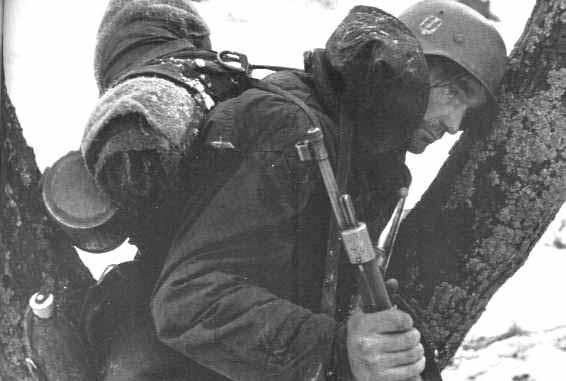
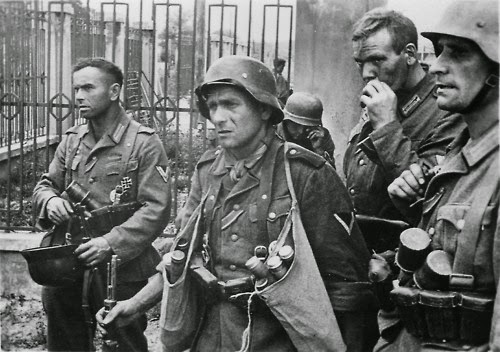

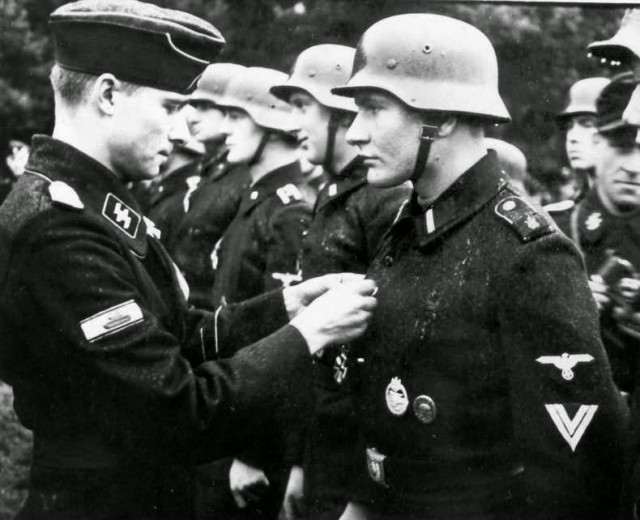

.jpg)
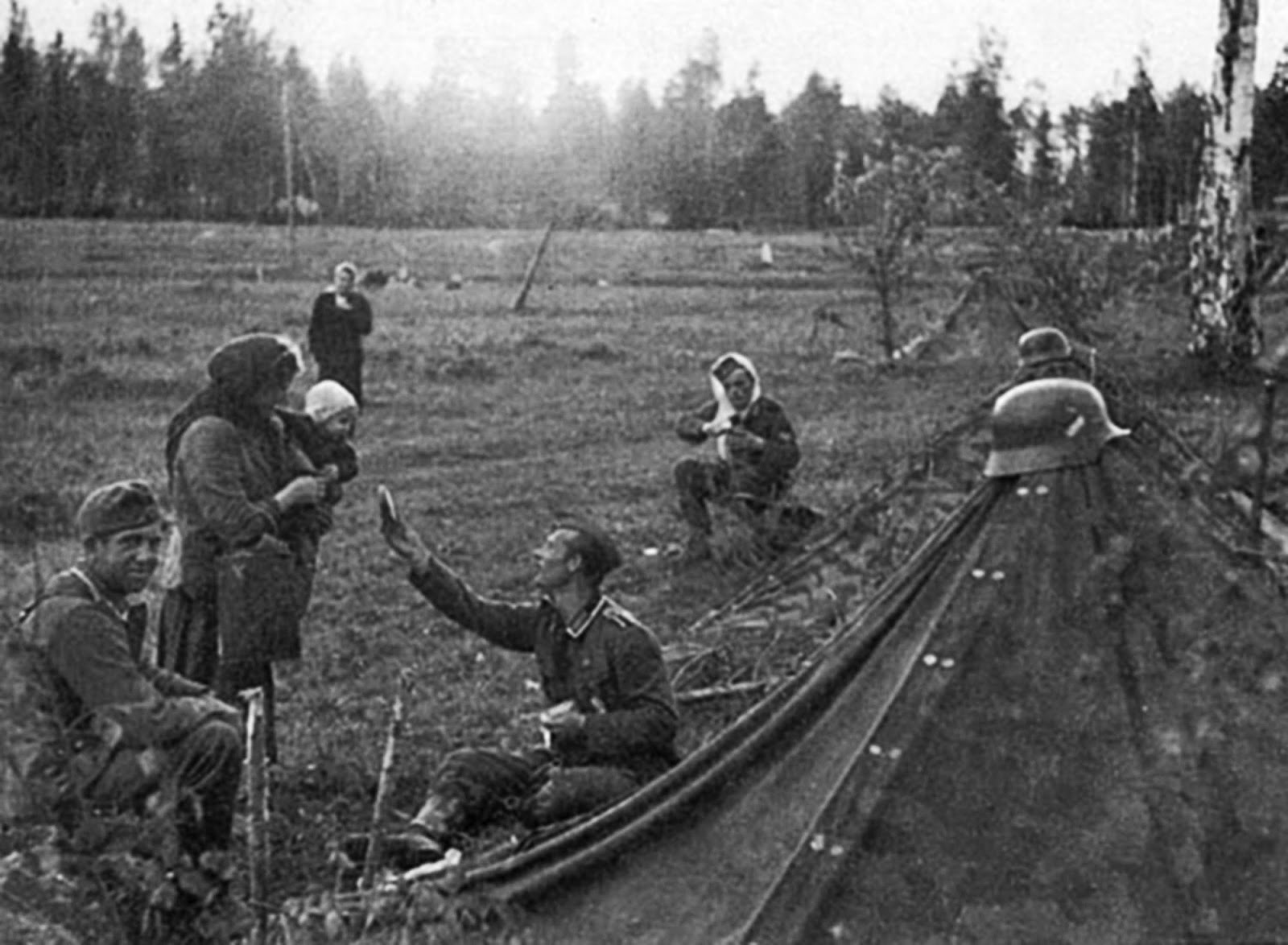
.jpg)

